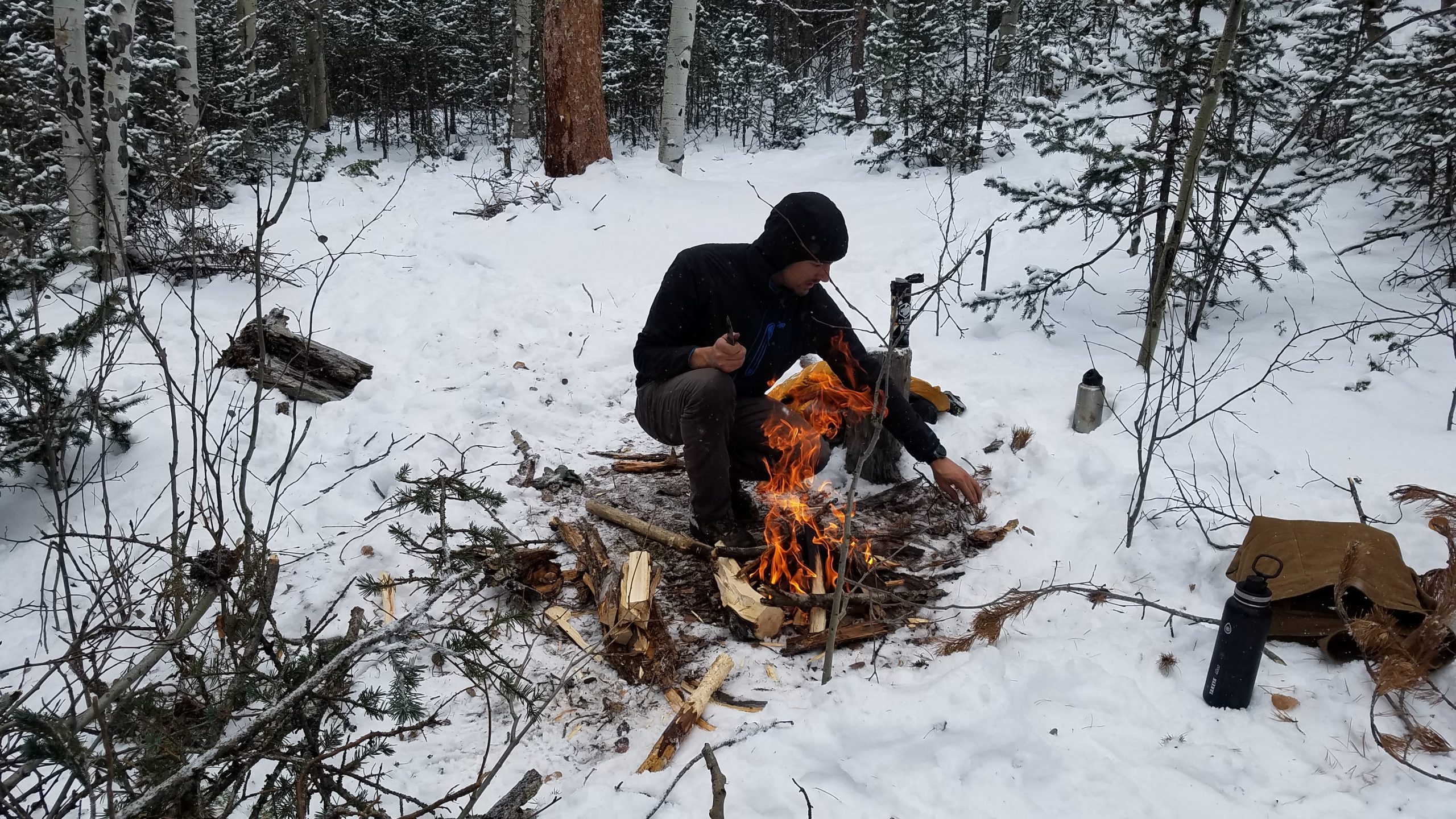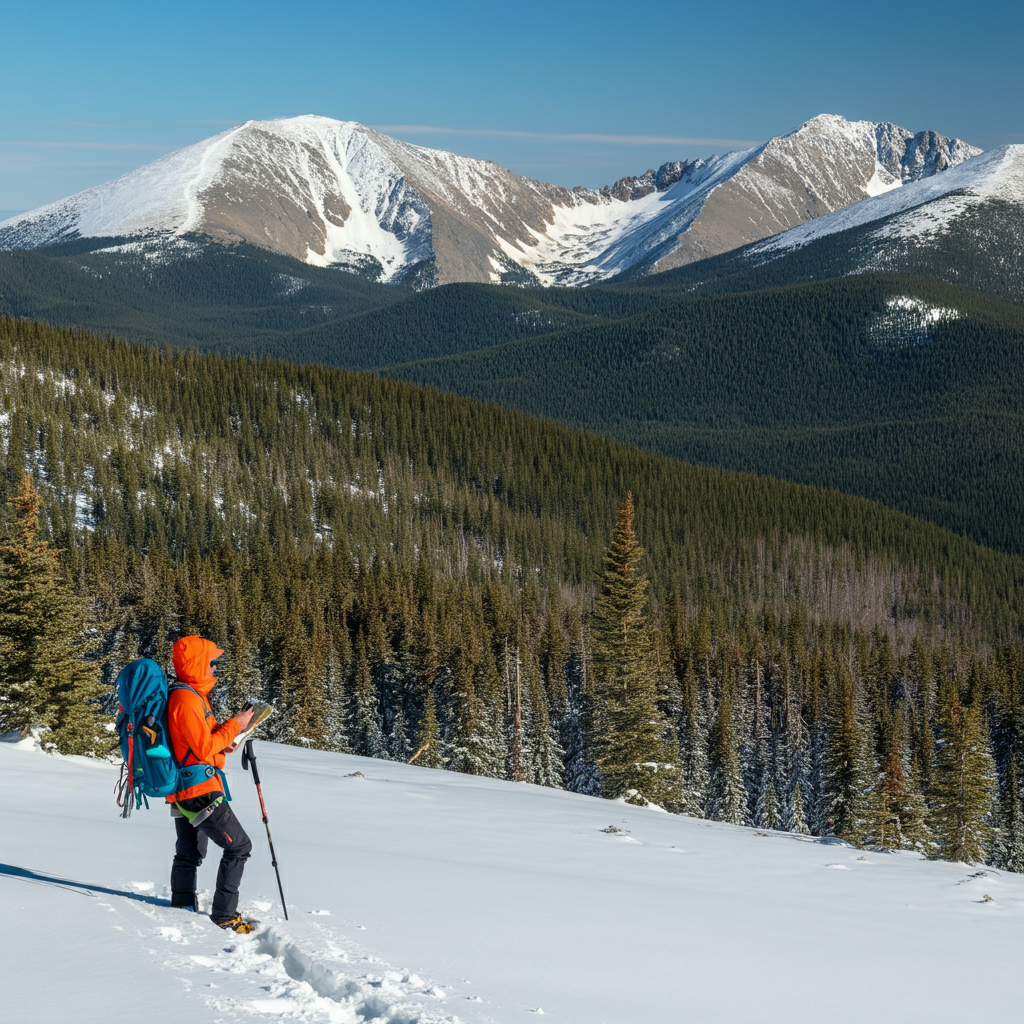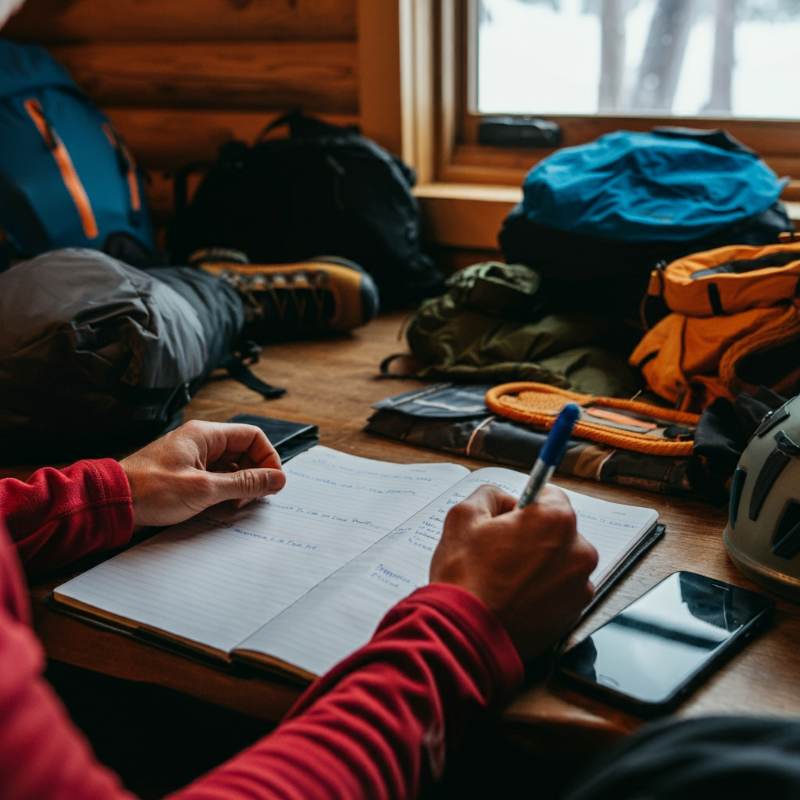Winter Survival in the Colorado Rockies — Part 6: Navigating and Avoiding Avalanche Danger
Winter Survival in the Colorado Rockies — Navigating and Avoiding Avalanche Danger

Surviving an avalanche starts long before the snow begins to move. By understanding what causes avalanches and how to recognize danger zones, you can reduce your risk of being caught in one. If the worst happens, knowing what to do can dramatically improve your chances of survival. Let’s break this down into prevention and survival strategies.
The best way to survive an avalanche is to avoid being in one. Understanding what causes avalanches and identifying high-risk areas are key to prevention.
Colorado’s heavy snowfall this year, combined with fluctuating temperatures, has created unstable snowpack conditions. When snow is fine, dry, and granular, like sugar, it doesn’t pack well. This unstable snow is known as hoar snow or sugar snow.
If you’ve ever tried to make a snowball with this kind of snow, you know how it crumbles. Now imagine a layer of heavy wet snow beneath it and another on top. This creates a ticking time bomb. As more layers of snow and external factors are added, a slab avalanche becomes inevitable. Slab avalanches occur when a cohesive layer of snow breaks away and rushes downhill. These are the avalanches most frequently triggered by backcountry adventurers like skiers, hikers, and snowmobilers.
Several conditions contribute to avalanches, and understanding them can help you assess the risks:
The angle of the slope is one of the most critical factors.  Avalanches most commonly occur on slopes with an angle of 30 to 45 degrees. You can measure slope angles using tools like a compass with an inclinometer, a protractor with string, or smartphone apps.
Avalanches most commonly occur on slopes with an angle of 30 to 45 degrees. You can measure slope angles using tools like a compass with an inclinometer, a protractor with string, or smartphone apps.
The direction a slope faces in relation to the sun affects snow stability:
Wind moves dry surface snow from one area to another, creating uneven layers. Wind can deposit snow into dangerous ridges or form snow slabs, both of which are prone to sliding.
Each storm brings different types of snow, creating multiple layers within the snowpack. Wind-blown snow from other slopes further compounds this instability.
Human activity is often the final trigger for an avalanche. Skiers, hikers, and snowmobilers create vibrations and disturbances that can destabilize an already fragile snowpack. Cutting across a slope can act like slicing a taut rope—the layers of snow give way, leading to disaster.
Poor decisions in the backcountry are often driven by ego, competition, or a desire to stick with the group. Group mentality can lead people to ignore warning signs or take risks they wouldn’t take alone.
Interestingly, experienced adventurers are often more at risk than  beginners. Overconfidence, past successes, or a lack of awareness about current conditions can lead to disaster. Newer adventurers may also rely too heavily on experienced partners, assuming their knowledge will keep everyone safe.
beginners. Overconfidence, past successes, or a lack of awareness about current conditions can lead to disaster. Newer adventurers may also rely too heavily on experienced partners, assuming their knowledge will keep everyone safe.
The intense desire to reach a goal—whether it’s a summit or a destination—can cloud judgment. Never let the need to "complete the mission" override your safety instincts.
When venturing into the backcountry, take these precautions to reduce your risk:
Even with precautions, accidents happen. If you’re caught in an avalanche, these survival strategies can save your life:
An avalanche beacon transmits your location to rescuers,  allowing them to find you faster. Time is critical—most avalanche victims only survive for 15 to 30 minutes if buried.
allowing them to find you faster. Time is critical—most avalanche victims only survive for 15 to 30 minutes if buried.
Asphyxiation is the leading cause of death in avalanches. Use your hands or arms to create a pocket of air around your face and mouth. Taking a deep breath to expand your chest before the snow settles can give you more breathing room. Staying calm and slowing your breathing is critical.
Avalanches move fastest and with the greatest force in the center. As soon as you see or hear an avalanche, move sideways toward the edge as quickly as possible. You won’t outrun an avalanche, but getting out of the center can increase your chances of survival.
As the snow carries you downhill, kick and move your arms like you’re swimming. This can help you stay closer to the surface and avoid being buried. Focus on swimming toward the edge of the avalanche.
While covering your mouth with one hand, stretch the other arm upward toward the surface. If part of your hand or arm remains exposed, rescuers may spot it more easily.
If possible, grab onto a tree or rock to help anchor yourself and stay oriented. While large avalanches can uproot trees, smaller ones may leave these obstacles intact.
Abandon any heavy gear that slows you down, but keep your pack on if it protects your back and neck. Freeing your hands is crucial for creating air pockets and swimming to safety.
Panic wastes oxygen and reduces your survival time. Focus on creating space to breathe and working your way out methodically. Only shout if you hear rescuers nearby to conserve energy and air.
If disoriented, use gravity to find up. Spit or drool and observe the direction it flows—gravity will guide you to the surface.
Avalanches are powerful and unpredictable, but understanding  the conditions that cause them and knowing how to respond can save your life. Always carry the proper equipment, assess risks carefully, and trust your instincts. Prevention is the best survival strategy, but if the worst happens, these tips can help you stay calm, act decisively, and increase your chances of being rescued. Stay safe out there!
the conditions that cause them and knowing how to respond can save your life. Always carry the proper equipment, assess risks carefully, and trust your instincts. Prevention is the best survival strategy, but if the worst happens, these tips can help you stay calm, act decisively, and increase your chances of being rescued. Stay safe out there!

Winter Survival in the Colorado Rockies — Navigating and Avoiding Avalanche Danger

Laying the Groundwork: How Thoughtful Preparation Can Make or Break Your Winter Adventure When winter blankets the Colorado Rockies with snow and...

The Growing Problem of Unprepared Adventurers in the Wilderness The Rise of Technology and Unprepared Exploration Technology has made it easier than...